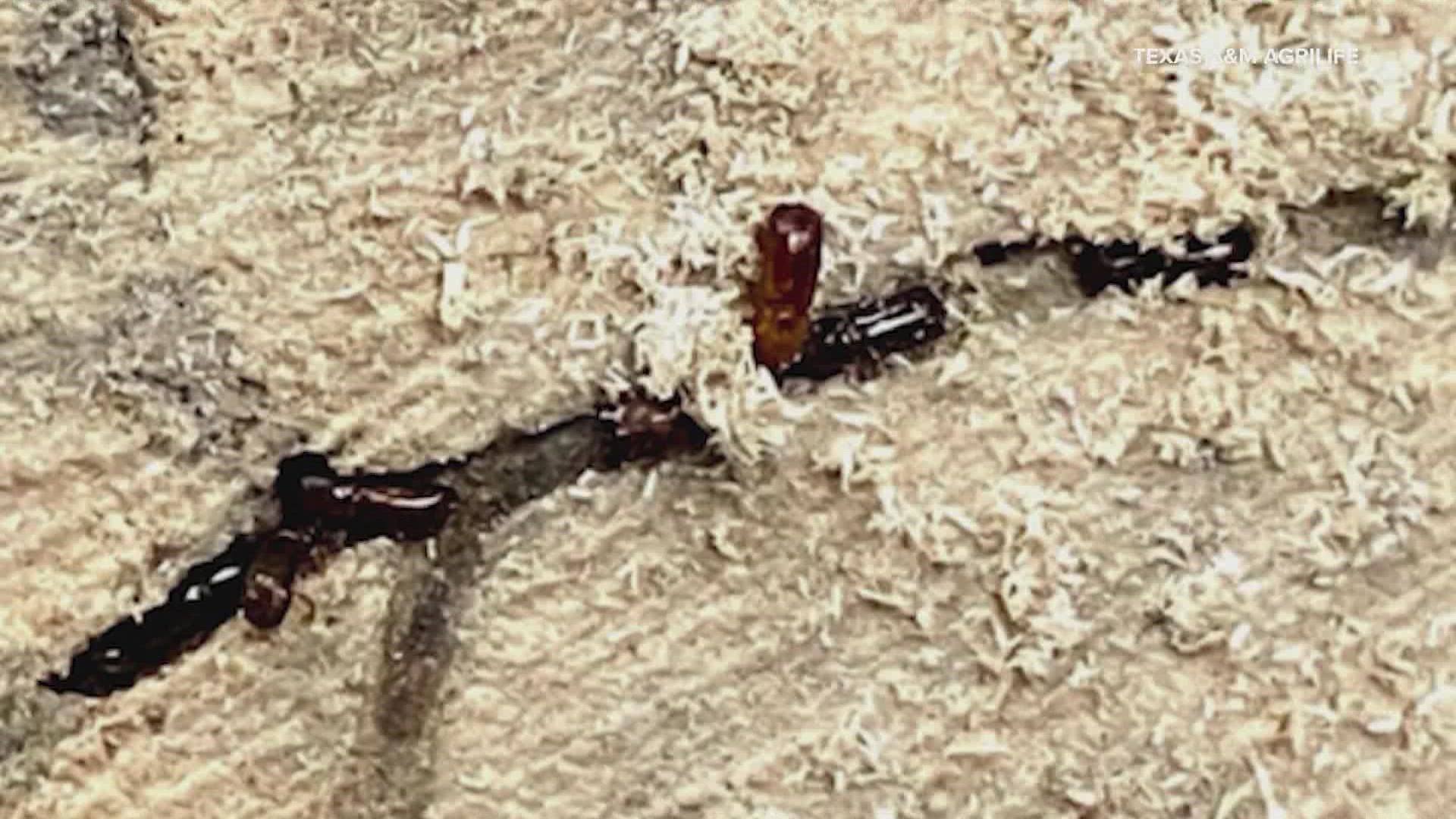HARRIS COUNTY, Texas — Scientists and researchers are sounding the alarm as a tree-killing disease spreads through the Greater Houston area.
The disease commonly known as ‘Laurel Wilt’ is spread by the red bay ambrosia beetle. The disease is so destructive, experts say once infected, some of our favorite trees only have about a year to live.
The first case in Harris County was reported in late 2021 at a home in Kingwood. Kate Henderson told KHOU 11 she began to worry about some of her red bay trees around Thanksgiving. Henderson said the trees had died by Christmas.
She reported the trees to the Texas Forest Service, which contacted Texas A&M Plant Pathologist David Appel.
“This was the first time I had seen it in neighborhood trees in Texas,” said Appel who confirmed the first case of Laurel Wilt in the state was in March 2015 in Hardin County, near Beaumont.
“We really need to pay attention to this one. It spreads very, very easily,” said the Texas A&M Professor of the disease which originated in Asia and was first confirmed in the U.S. near Savannah, Georgia in 2002.
While tree roots can also spread Laurel Wilt from tree to tree, the beetle, Appel said, is a super spreader. While the insert is barely visible on a tree’s bark, the strings of sawdust it leaves behind as it works its way into a tree are easily visible and a sign of infestation.
Red bay ambrosia beetles can lay thousands of eggs within diseased trees and because of their tiny size, wind can carry the insect far to other trees. The U.S.D.A. reports in the 20 years since Laurel Wilt was first detected in the U.S., the disease has spread to 12 states and 16 Texas counties. Appel said the disease has, “a great potential to spread and become an epidemic very quickly.”
WHAT TREES ARE AFFECTED BY LAUREL WILT?
Red bay, sassafras, avocado and swamp bay trees can be affected by Laurel Wilt. The U.S. Forest Service estimates a half-billion trees have died since 2002.
“When trees die, it gets people's attention.” Trees can affect home values. They help protect against Texas heat. “After the trees die, they do begin to decay,” and could fall during severe weather. Henderson told KHOU 11 she’s already lost 17 red bay trees to Laurel Wilt and has more sick trees on her property.
While costly fungicide injections seem to help, scientists say there’s no cure. “So we’re going to be watching this very carefully,” as a new tree-killing disease moves through the Houston area.

